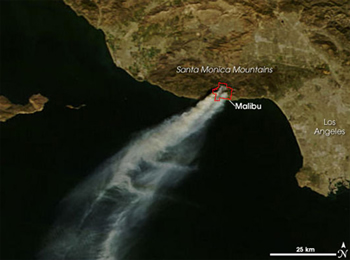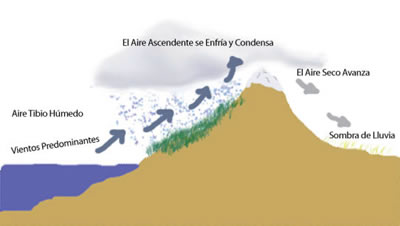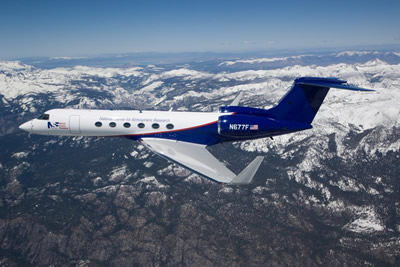Haz "click" en la imagen para una vista completa
Related links:
Type of Wind: Chinook or Foehn
There are several different types of wind that occur locally at the small scale. One type of small scale wind is the foehn wind. This type of wind is characteristic of mountainous areas such as the Rocky Mountains and the Alps. The wind off of the Rocky Mountains in North America is a foehn wind that is called a Chinook wind. A foehn wind is a warm, dry wind that descends on the eastern slopes of most mountains.
A warm wind like this can bring relief from cold winter weather. Compressional heating is the main source of foehn winds, which means that warmer and drier air flows from aloft or above. This wind has the same force as some hurricane winds. This force can melt and evaporate a foot (0.3 meters) of snow in less than a day. A change in temperature can rapidly occur as a result of foehn winds. Temperatures in Granville, ND increased by 83º F (28ºC), from -33ºF (-36ºC) in the morning to 50ºF (10ºC) in the afternoon of February 21, 1918 because of a Chinook wind coming from the Rocky Mountains!
In addition to creating warmer temperatures in the winter months, foehn winds have other impacts in the regions where they occur. These winds can cause snow to melt, which may lead to avalanches and flash flooding. Foehn winds can also create fire hazards. The Santa Ana winds in Southern California are an example of foehn winds that have created large forest fires because the wind causes the fire to burn out of control. Finally, if the warm foehn winds occur after spring planting, the seeds might not survive because the wind has parched the soil.
Since this wind is characteristic of mountainous areas, foehn winds can be found all over the world and each place has a unique name for them. In Poland, a foehn wind is called halnywiatr. In Romania, this wind is referred to as the austru, and in Switzerland it is called the favogn. There is a desert foehn wind in North Africa named the ghibli and in South Africa, a hot dry wind is identified as a berg wind. Argentina uses the name zonda for the hot foehn wind. Finally, in the Andes the foehn wind, called a puelche, comes off the western side of the mountains.















